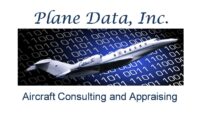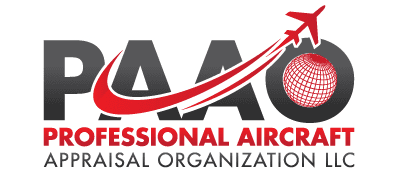Download or Read the Report Below
Below, you’ll find our report “The 6 Most Common Mistakes to Avoid when Evaluating Aircraft” If you’d like to download this report and read it later, fill out the form below and we’ll send you a copy.
The 6 Most Common Mistakes to Avoid when Evaluating Aircraft
Common Misconceptions
What are the most common mistakes that people make?
Many buyers and sellers see proper evaluation of an aircraft as confusing, complicated and completely unnecessary. After all, who needs to spend money to find out what an aircraft is worth? Anyone can pick up a copy of a published value guide or go on the internet to see what an aircraft sells for – right?
The truth is, evaluating an aircraft really isn’t all that complicated, but it is important to make sure all factors are considered when undertaking the effort of determining an aircraft’s fair market value.
It is important for a buyer or seller to know what a specific aircraft is worth, in order to make informed decisions based on factual data and research.
Before discussing the methods and pitfalls of evaluating an aircraft, let’s better understand the term “market value” itself, what it represents and how it is derived.
The term “market value” used in this document requires three basic conditions to be present:
- a knowledgeable and willing buyer/seller
- normal market conditions
- neither party under any pressure to act
If any ONE of these conditions is not present, then we are no longer talking about market value but some other value and this concept is important to keep in mind as you consider anyone’s opinion of value.

Of all the misconceptions that evaluators use, these are the most common which can over-value or under-value an aircraft.
#1. Avionics
Many owners who are selling their aircraft state that “thus-and-so” piece of gear is brand new or was put in a couple of years ago. The fact is, it doesn’t matter “when” the equipment was installed.
That piece of gear is either in the box on the avionics shop’s shelf or in the aircraft.
If it’s in the aircraft, it is considered by the marketplace to be USED EQUIPMENT.
Just like driving a new car off the lot, avionics gear loses value once it is installed. Don’t take my word for it. Go to your local avionics shop and ask them if they will buy that piece of gear in your panel at full retail.
Don’t be surprised when they laugh.
#2. Avionics Age
I’m not sure where this concept came from although I did notice one of the published guides attempting to provide guidelines for age and value.
I don’t know of anyone who walks into an avionics shop and asks for a 1985 KX-155 and a 1983 Nav head.
The truth is that the market value for a KX-155 and related Nav head (presuming it is working and in good condition) will hold up regardless of its age. The values are dictated by the market and the condition of the unit. If you don’t believe it, check the “Used Avionics” section on any web page and see how many list the year of manufacture.
#3. Aircraft Rating
How many times has someone said that an aircraft is an 8 or 9 overall?

The problem with a rating like that is that the rating system being used is a “relative comparison” with 1 being the lowest and 10 being the highest.
Average aircraft (for that year make and model) should be rated a “5” on this scale.
Try this test. How do you think a brand new – right off the production line – 172 would be rated?
If you said a “10” you would be incorrectly over-rating the aircraft. For that year make and model, this is average – or a “5” rating.
Turbine aircraft are also good examples here. Because businesses typically own these types of aircraft and have the resources to maintain them in good condition, you might think they would be rated 8’s and 9’s.
However, because they typically are in such good condition, they should actually be rated closer to average.
#4. Installation Labor
Sorry, this has no market value.
This is not my opinion but the buyer’s opinion. Vehicles are a great example here.
If you were to buy a used vehicle, do you consider the amount of labor that went into installing the stereo system or any other add on?
The fact is, the buyer will not pay for the owner’s choice of mechanic.
#5. Routine Maintenance
Here again, the marketplace presumes that the owner keeps the aircraft in an airworthy condition and sees no additional value in routine maintenance or repairs that have been performed.
That said, there is a time related value associated with annuals. This depends on the type of aircraft, but an aircraft that has just gone through an annual will command a slightly higher value than one that is just one month away from being out of annual – all other things being equal.
#6. Recent Improvements
If you have just paid a tremendous amount of money to completely upgrade your interior, you will not get 100% of that investment out of it.
The market value of that aircraft will increase but it will be determined by the quality of work and its present condition, not how much someone paid to have it done.
Value Points
Now let’s look at the factors that make up an aircraft’s value. These are known as “value points”.
The most important ones include:
The aircraft’s damage history.
This is more than just an understanding of what it cost someone to fix a particular damage event. It also includes an understanding of the level of damage, how it was repaired, and whether it was documented properly. The buyer’s perception of the damage event is what drives the value of damaged and repaired aircraft.
Engine and airframe modifications (if any).
Make and model of all avionics.
This value point can make up an exceptional percentage of an aircraft’s value, so it is important to capture all avionics as accurately as possible by make and model.
Condition of the airframe.
Inspection status of the aircraft.
Propeller time since new or overhaul
Engine overhaul status.
Condition of the de-ice equipment
Inspection status of the aircraft.
Condition of the paint.
Condition of the interior.
If any of these value points is overlooked, then the accuracy and reliability of the final result is going to be off.
Determining Value
Now let’s turn our attention to the most popular methods of determining an aircraft’s value.
While each method has its own advantages or disadvantages, consider each method as it relates to two key items:
- The value points collected
- The data used to assess the value.
It is fair to say that if either the method or the data is questionable or incomplete, then the result will be much less than accurate, credible and reliable.
You might think this a ridiculous way of buying and selling aircraft, but it happens all the time.
This fails the “market value test” of having a knowledgeable buyer and seller.
Another method uses classified advertisements. The use of a classified ad (while more accurate than picking a number out of the air) relies on the ad to use reliable data and capture all value points.
Unfortunately, the published figure is an “asking” price and does not reflect the actual selling price, which represents the actual market value. In addition, the seller may have different objectives than selling the aircraft in a reasonable amount of time.
Sellers who publish information about their aircraft tend to gloss over many of the key negative value points which may provide an unfair or unrelated comparison.
As a result, aircraft being submitted where this method has been used for evaluation will tend to be priced higher, resulting in an artificially inflated advertising environment.
One method most commonly used by banks, aircraft brokers/dealers, insurance companies and many websites rely on published aircraft price guides. The belief is that the published information is accurate and reliable since it has been used for many years but this believe was challenged and proven to be incorrect during the financial collapse in 2007-2008.
In 2007-2008, aircraft values plummeted but publications continued to report unrealistically high values.
However, the guides are quick and fairly easy to use by just about anyone.
The data essentially comes from the book’s subscribers who complete a questionnaire periodically.
It is unclear how the publisher determines the reliability and accuracy of this data as the objectives of the individual(s) submitting this information may be to artificially inflate the marketplace.
Many of the value points highlighted earlier are also not addressed in these publications, such as damage history and missing log books.
Professional Appraisals
Up until now, we have been talking about methods used to provide an estimate of the aircraft’s market value, more commonly known as a “desktop appraisal” or analysis.
It is apparent that some of these methods will be more accurate than others. However, the most reliable and accurate method available takes into account all value points and uses data based on actual sales figures or market value.
In this situation we are talking about having the aircraft professionally appraised by an experienced, trained professional.
If you read the fine print on any of the published guides and web sites there is usually a statement that indicates that the publication is only a guide and does not take all factors into account to determine a specific aircraft’s market value.
In those situations, when it is important to obtain a credible, reliable opinion of value for a specific aircraft that can be supported, a professional appraisal is required.
This is NOT to be confused with a “desktop appraisal” report.
“Desktop appraisals” and market analyses are typically and easily confused with professional appraisals, and the typical layperson does not understand the difference in the accuracy, credibility or reliability of the information.
One way to quickly test if you are getting an appraisal, “desktop appraisal” or market analysis is to understand:
- Who is performing the evaluation?
- Is someone going to be physically looking at the aircraft and its documentation?
Knowing this, if the objective is to determine a reliable, accurate and trustworthy opinion of value for a particular aircraft that takes all key value points into consideration, then a trained, experienced professional is needed to provide an unbiased and impartial opinion of value.
The person performing the appraisal should be completely unbiased about the aircraft and should be certified by an agency to perform aircraft appraisals.
Real estate appraisals are not performed by the seller, the broker, the selling agent, or the banker.
Individuals who are too close to the deal tend to weigh things in their favor to influence a particular outcome.
The other critical component is to complete a field visit and examine the aircraft, its documentation and its systems.
This is the only way to accurately capture all value points and verify their condition. Anything less means that the evaluator gathered information from someone else who may or may not have first hand knowledge about that aircraft. The details could be missing, misrepresented or obtained from someone who was biased in some way.
In either case, you are getting a “desktop appraisal” or market analysis and neither is worth very much if you need an accurate and reliable report.





